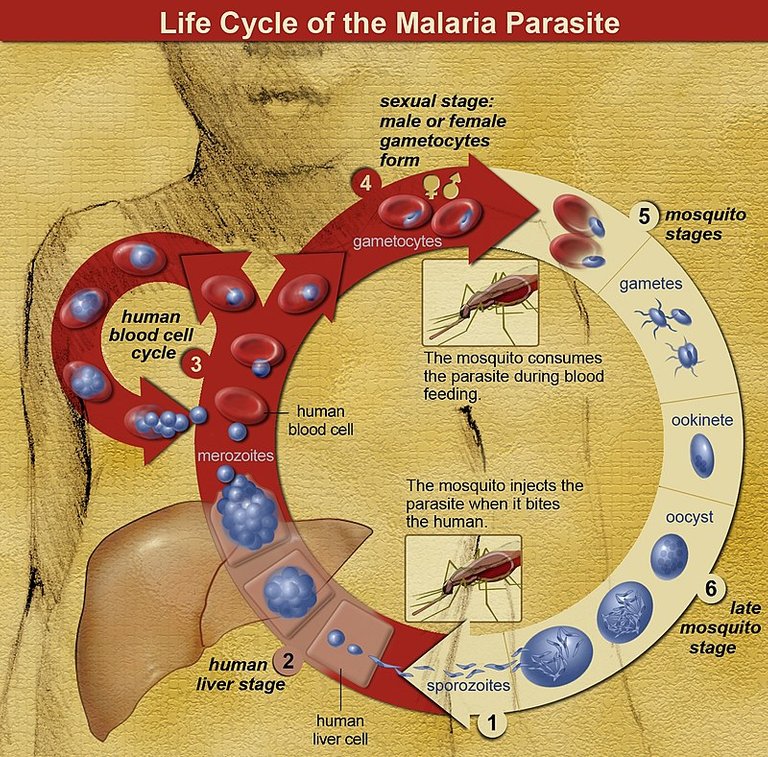
This is a concluding part of the article
"vampires of the tropics: an exhaustive overview"

The malaria parasite
We have been able to establish for a fact that mosquitoes are the major vector of the malaria parasite - plasmodium, the pathogenic organism responsible for malaria in humans.
These parasites are usually transmitted to the host during mosquito bite. The major species of these parasite that infect man are
•Plasmodium falciparum ( the most fatal one and this is particularly confined in the tropics)
•Plasmodium aedes
•Plasmodium ovale and
•Plasmodium vivax.

Life cycle of Plasmodium falciparum
Malaria has two life cycle involving an alternating cycles of asexual division (schizogony) occurring in man who is the intermediate host and sexual development (sporogony) occurring in female anopheles mosquito which the definitive host.
Human (asexual cycle)
Malaria parasite are transmitted by the bite of an infected female anopheles mosquito. The sporozoites which are slender
in shape are the infective form of the parasite and they are present in the salivary glands of the female anopheles mosquito. During the course of obtaining blood meal, they inject these parasites directly into the human blood stream through their proboscis.
The human cycle is made up of Four stages - (pre-erythrocytic, erythrocytic, gametogony and exo-erythrocytic or dormant schizogony)
During the PRE-ERYTHROCYTIC stage this sporozoites that have been injected into the blood by the mosquito within one hour leaves the blood and actively swims into the liver and changes from the slender form to become rounded, they multiply asexually to form tissue schizont as merozoite in the liver. After multiplication the tissue schizont ruptures and thus releases the merozoites into the blood stream, these merozoites released can then attack the red blood cells (erythrocytes), this stage is the ERYTHROCYTIC tage. They obtain nutrients, develop and transform into trophozoites and again multiply asexually to form blood schizont which when the red blood cell ruptures releases many merozoites, these merozoites released further infect other red blood cells to repeat the cycle. The trophozoites (ring forms) are the ones that feed on the red blood cell contents, as they feed on the red blood, malaria pigments (haemoglozoin) are produced as an end product of haemoglobin (a component of the red blood cells that helps to transport oxygen to tissues in the body) break down. These pigments accumulates in the trophozoites appearing as brown-black granules. These pigments in the trophozoites (ring forms) are usually what is seen on blood film when testing for malaria parasite. Whenever you go for malaria test in a hospital or a laboratory what we do in the hospital lab is to basically get few sample of your blood, prepare a blood film and then we vieew and count the number of these parasites in your blood using the microscope. The plasmodia are microscopic organisms and can only be seen with the aid of a microscope 🔬
When they are numerous, it is simply referred to as plasmodiasis. The first picture shows red blood cell that is infected with a single malaria parasite while the second picture shows red blood cells that are infected with multiple malaria parasite
and requires urgent treatment with anti malaria drugs to clear this parasites from the blood.
At this point, I will like to explain why you feel some chills run through your body during malaria illness. The reason why you feel chills, a feeling like as if cold water was poured on you during malaria attack is due to the merozoite attack on the red blood cells, at every point in time the merozoite attack a healthy red blood cell, you feel chills that make you vibrate. The attack of fever occurs at the rupture of the red blood cells (erythrocytes) and release of the merozoites that attack other red blood cells.
After some cycles, the parasite also divides sexually (the GAMETOGONY stage) in some of the red blood cells to form male and female gametocytes which do not develop further until they are taken up by another mosquito while feeding from a human. For the life cycle to be continued, the gametocytes must be ingested by a female anopheles mosquito, if they are not taken up during the course of sucking blood from humans they die.
Note: In this human cycle, some sporozoite of Plasmodium ovale and Plasmodium vivax may remain dormant or inactive in the liver as hypnozoites for many months only to be reactivated and then undergo asexual multiplication after which they are subsequently released into the blood stream.
These hypnozoites are the ones that cause RELAPSES of the disease months to years after the initial attack ( by relapse I mean re-occurence of malaria illness). This is the main reason why you are likely to have a rebound malaria attack after treatment. As long as these hypnozoites are in the liver tissue, one is likely to suffer another malaria attack if they are not cleared or eliminated with anti malaria drugs that destroys them.
Normally some of these parasites in the blood are eliminated or cleared from the blood by the immune system or with drug but in a situation where they are not cleared or eliminated and their numbers begin to increase in the red blood cell again with subsequent malaria clinical symptoms, this situation is what is known as RECRUDESCENCE. This is similar with relapse which is due to hypnozoites in the liver but this time around the parasite are in the red blood cells.
Mosquito cycle (sexual cycle)
After ingestion of blood containing the male and female gametocytes from human by the mosquito, fusion of the gametocytes occurs leading to fertilization and a zygote is formed in the stomach of the mosquito. This zygote then develops into an ookinete (motile form that penetrates the epithelial lining of the mosquito) to develop into an oocyst which matures to produce many sporozoites.
These sporozoites then move to the salivary gland of the mosquito and are injected into the human host when the mosquito takes blood meal. This marks the beginning of a new cycle in human

Pathophysiology
The major clinical signs of malaria consist of chills, fever and sweating and these usually is because of the rupturing of the red blood cells (erythrocytes) and the release of merozoites, pigments and cell debris into our blood stream.
During the rupture, many erythrocytes are destroyed and anaemia (reduction in red blood cell) may develop. Malaria caused by Plasmodium falciparum is the most fatal and often called Falciparum malaria. It is the most pathogenic and of the human malaria species and if untreated results tosevere disease and death, particularly in young children, pregnant women and adults with reduced immunity ( decrease in the ability of the body to fight against infection)
The pathogenicity of P. falciparum is mainly due to:
• Cytoadherence ( attachment of cells that have been damaged or infected to each other) of falciparum parasitized red cells to each other, causing the cells to gum or adhere to one another and to the walls of the capillaries (blood vessels) in the brain, muscle, kidneys and elsewhere and in pregnant women especially iin the placenta. This will reduce or totally block the flow of blood to very important organs in the body.
It is usually more dangerous in the brain and results to CELEBRAL MALARIA because once this infected red blood cells block the flow of blood in the brain, this frequently leads to death even when appropriate therapy has been given. Cerebral malaria is characterized by paralysis, coma , and this usually occurs in children between 6 months and 5 years and most commonly in children aged 3-4 years.( This happens to them more because of the little size or diameter of the blood capillaries)
In pregnant women,
normally their immune system ( the system of the body responsible for fighting again infections) is reduced. They are at greater risk of been affected in this condition and these parasites can cause harm to the baby.
Other complications of malaria include kidney failure, hypoglycemia (reduced level of blood sugar which can lead to coma), oedema
(accumulation of extracellular fluid in the the body and tissues ), hyperpyrexia (increased body temperature) and jaundice (increased bilirubin due to destruction of red blood cells in the body).

Clinical features
The major characteristic feature of malaria is fever (increased body temperature) which as I have explained earlier is caused by toxins that are released when the erythrocytic schizonts rupture. These toxins stimulates the secretion of cytokines (small regulatory proteins that regulate the cells of the immune system) from the leukocytes (white blood cells responsible for fighting against infections or foreign substances in the body) and other cells.
The typical fever starts with a cold (rigor) this lasts for about 15-60 minutes and during this stage you shiver and feel cold even though your temperature is rising.
The next stage that follows is the hot stage lasting for about 2-6 hours, during this stage you feel very hot and develop very high fever with the temperature of the body reaching about 40-40.6 degree Celsius against the normal body temperature which is in the range of 35-37 degree Celsius , you develop headache, nausea and feeling of vomiting, back and joint pains. The final stage is when you perspire (sweat profusely) your temperature then begins to fall, the headache and other pains are relieved and later you feel exhausted.

Treatment (chemotherapy of malaria)
Usually drugs used in the treatment of malaria are classified based on the phase of the cycle they act on.
•The tissue schizonticide: (kills the schizonts found in the liver tissue and also the hypnozoites that cause re-occurence of malaria attack) , e.g is the primaquine, tafenoquine ( this drug is currently in phase 3 clinical trial)
•The blood schizonticides: (kills the schizonts found in the blood stream) they are usually suppressive in nature and there is likely for malaria re-occurence. E.g chloroquine, proguanil etc
•casual prophylactics: these ones block the link between the pre-erythrocytic and erythrocytic stage and this prevents infection from becoming attack on the red blood cells. E.g Lumefantrune, proguanil, pyrimethamine and mefloquine
•drugs that prevent transmission: these ones destroys the gametocytes and consequently prevents transmission by mosquitoes and this helps to diminish human reservoir of the malaria. E.g Primaquine, proguanil and pyrimethamine.
Others include
Lumefantrine( this one is useless alone, it is usually used in combination with Artemeter) the combination is able to prevent the parasite from been able to detoxify haem (a component of the red blood cell that is harmful to this parasites). The drug make or prevents them from been able to make the haem less harmful to them.

Popular combinations of malaria drugs , this list is not exhaustive
Artemeter-Lumefantrine (coartem)
Artesunate-Amodiaquine (Dart)
Artesunate-sulfadixine-pyrimethamine (Fansidar)
Dihydroartemisinin-piperaquine (Waipa). Etc

Drug resistance
Drug resistance is a situation where by these parasites in the blood are not cleared or eliminated after treatment with drugs. It occurs when the correct full dose of anti-malaria drug is not taken taken by the patient.
So when taking malaria drugs, you have to ensure you take the complete dose so that the parasite will be completely wiped out. Normally during treatment with anti malaria drugs, after you must have taken the drug, you feel better and you are tempted not to continue with the drug. This is a bad practice and I would advise you to desist. These parasites if not well eliminated can mutate, adapt to the drug and become much more tougher and difficult to kill. Drugs we take have specific receptors where they bind and act on the parasite. These parasites have the ability to change their receptor site on which the drug act and thus making it difficult for the drug to act on them. Taking this same drug when there is a re-occurence of the malaria attack will not effect any change or cure because the parasite has mutated or adapted to the drug. The only way this can remedied is to use a different drug entirely that has another mechanism and site of action.
Different types of malaria drugs are produced basically because of drug resistance exhibited by the parasite, so it is advised to ensure that you take the correct dose of the drugs as prescribed by your physician. Drug resistance is seen more with antibiotics (drugs used in the treatment of bacterial infection).

Latest trend
Mosquito Vaccines
Vaccine are drugs that helps to prevent the attack of an infection.
After long years of malaria devastating effect, I am pleased to inform you that malaria vaccine is now available though not yet fully put into use. It is still undergoing clinical trials to ensure it's efficacy and potency are real.
The name of this vaccine is RTS'S. RTS'S vaccine also called MOSQUIREX is a vaccine produced by Glazosmithkline biologicals. It is the first malaria vaccine to have completed the pivotal phase 3 trial. It offered the best protection among children aged 5-17 months who have received 3 doses of the vaccine a month apart, plus a booster dose at 2months.It is still undergoing clinical trials and will be introduced into Africa this year 2018 in Ghana, Kenya etc
Source
Development of genetically modified mosquito
OXITEC is a company in the US that have been able to develop genetically modified mosquitoes, a breed that will resist malaria parasite infection and also pass this trait of resistance to other generation. This means that all mosquitoes irrespective of their species, as long as they mate with this genetically modified breed, they wont be able to retain the parasite -plasmodium. This is a wonderful break through in science as a whole.
Source
If this is fully implemented, it will really salvage the menace caused by these malaria parasite that are transmitted by mosquito bite.

Further reading about genetically modified mosquitoes and mosquito vaccines.
click RTS'S malaria vaccine
click Oxitec our solution technology
click The atlantic-Genetically modified mosquitoes
click scientific American- fda says deploying genetically modified mosquitoes is environmentally safe
click mosquirix the worlds first malaria vaccine
click Aljazeera-world malaria vaccination approved

References
Textbook of pharmacology, Edited by P. Iwe. Akubue ( page 536)
Essentials of medical pharmacology by K.D. Tripathy. 8th Edition, (page 780-796)
Basic and clinical pharmacology by Bertram G. Katzung, Susan B. Masters and Anthony J. Trevor. 12th Edition (page 915-925).
District laboratory practice in tropical countries, 2nd edition update pt1. By Monica Cheesbrough (page239-258)
Medical parasitology 4th edition by D.R. Arora and Brij Bala Arora.(page 73)
I believe we learn every day, constructive criticism if any, comments and also questions will be highly appreciated.
Kindly follow @cyprianj for more fascinating articles on medical, science and health.
Thanks for reading.

Appreciation
This goes to two people that have been of immense help, support and motivation to me on this platform @rok-sivante and @greenrun. Thanks so much, it's a privilege meeting you guys.
If you want to be like wise, you learn from the wise
God bless
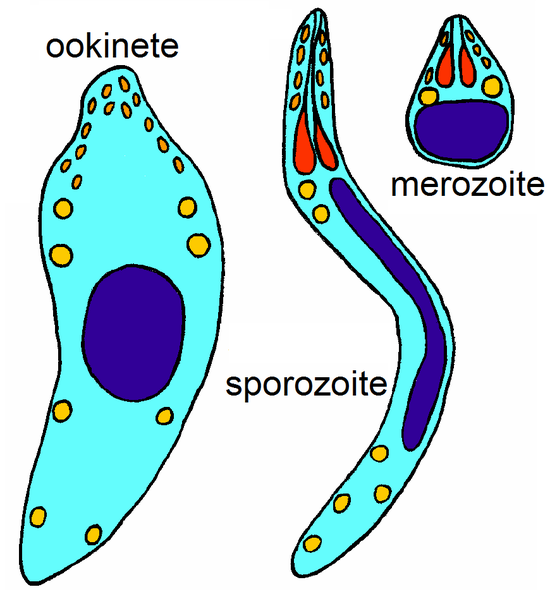
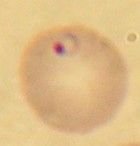
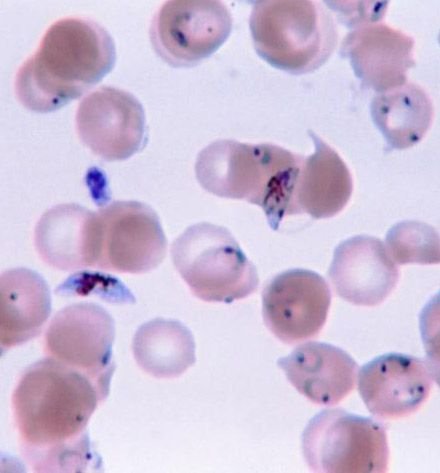
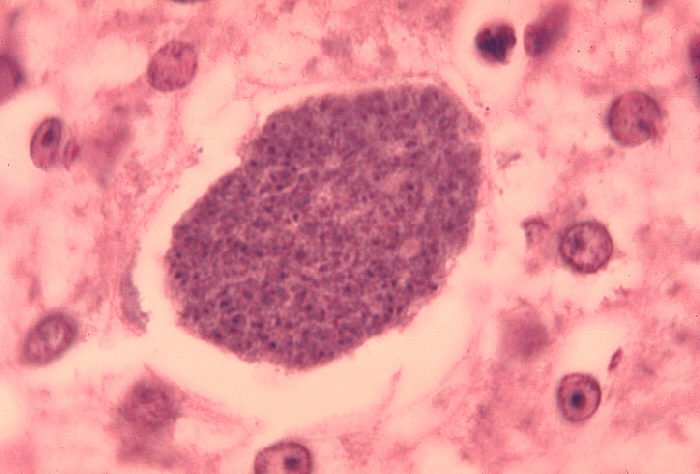
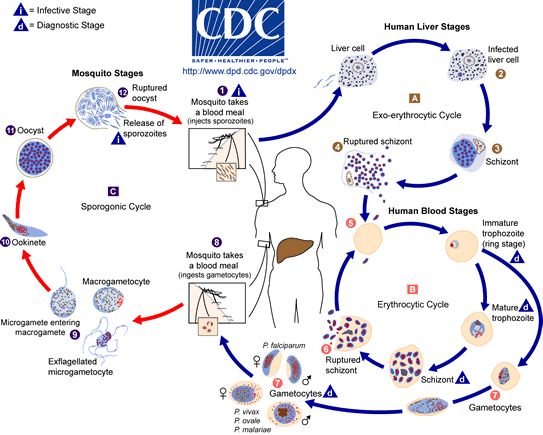

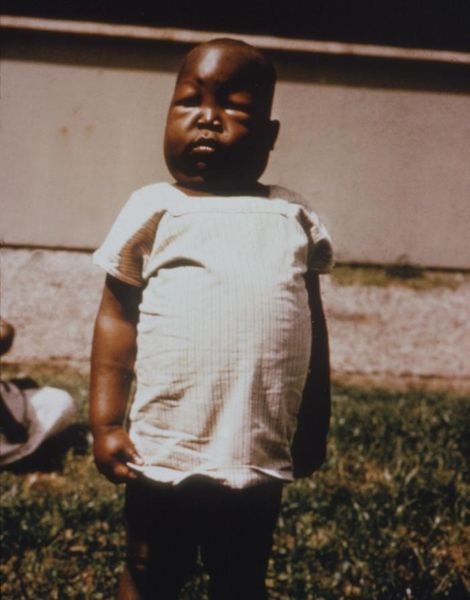
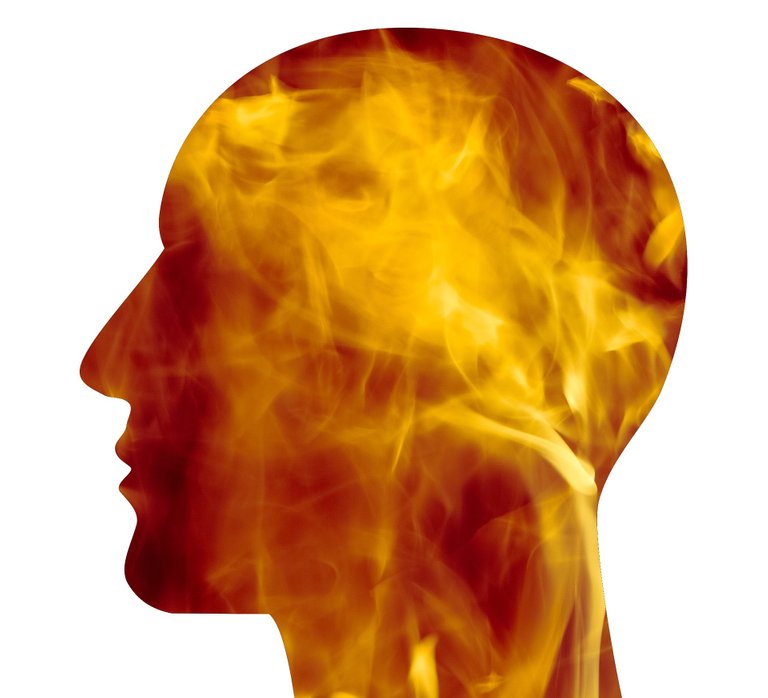
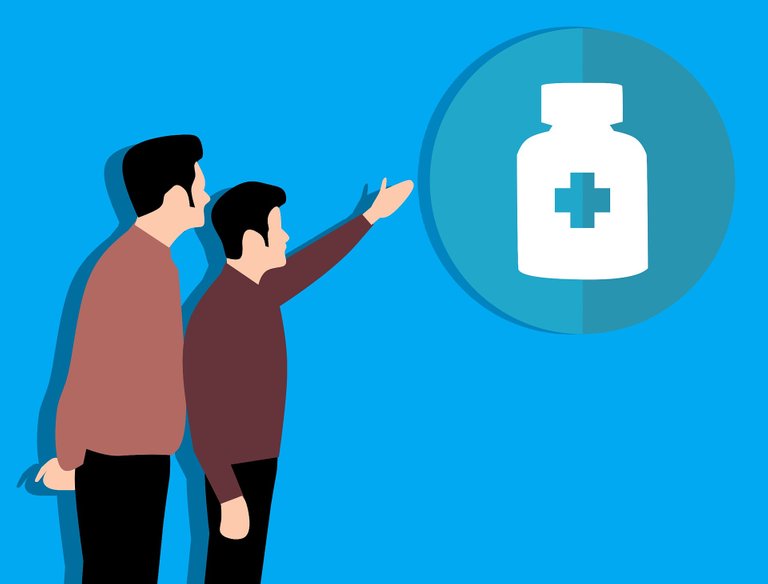
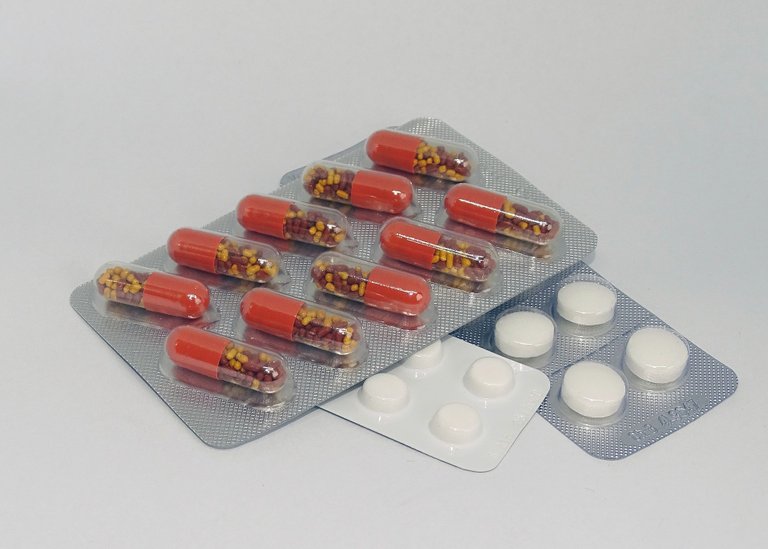
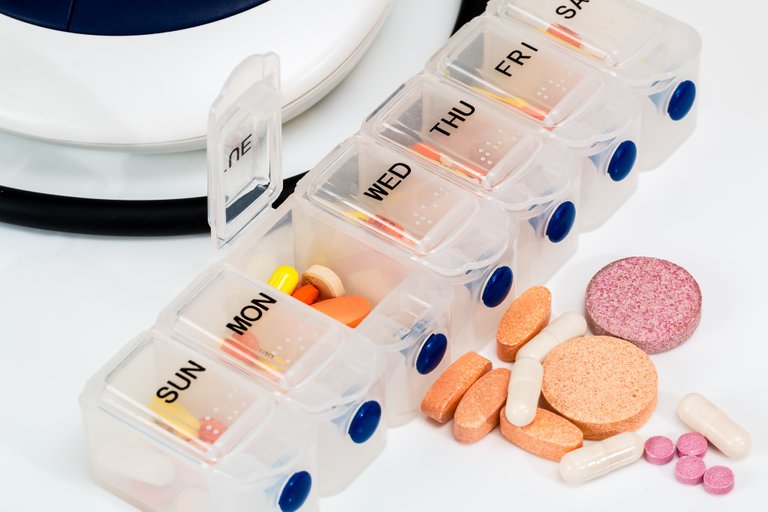
Now i understand why i keep having malaria over and over again
This is a well detailed post, really learnt something most importantly the malaria pigments (haemoglozoin), first time am hearing of this in my study about malaria.
So the chills i always experienced is due to the rupturing of red blood cells. Those guys just love us to much to leave us. But who cares, our health is more important.
I really pray OXITEC is fully implemented and adopted. That is one hell of genetic technology. Will go a long way to solve and prevent many death majorly in africa.
Nice and interesting post, i guess i will bookmarked it.
Brilliant!
Thanks for the acknowledgement.
The deployment of these modified mosquitoes will drastically reduce mosquito menace in the tropics.
They are still doing more research on it, there is hope for Africa.
Thanks for reading bro, it's a pleasure having you here
Such knowledge-filled piece. It's surprising to think how such things treated with so much levity around here could have such a terrible effect on humans
Yeah they do...
Thanks to science and research which have both provided ways to cure this disease.
Thanks for checking in @harrywill
I have treated malaria thrice this year.
There is good news , in no time we all will be vaccinated against malaria.
Science is going deeper to remedy the situation.
For now, preventive measures are important. Stronger malaria drugs like leonart will help to kill the hypnozoites and prevent the re-occurence.
Thanks a so much for reading
after reading all this I feel like a medical student, of which I'm not. the post was well constructed, and very informative. nice one bruv
Lol.....by mere fact of you reading it. Obviously you are now.
Atleast you are now richer in knowledge.
Thanks for stopping by.
Now this one sounded more like my moden biology then...lol...
Again, nice work @cyprianj this is a must read for us all in the tropics, cos a problem known is half solved...
I ask, how does this process ensure the continuation since she dies by socking it...?
Also, i just rcovered from a malaria attack few days ago,i have been getting the signal since but choose to ignor it till it hits me down and with havy hot body tempreture that even my breath was hot. Now my question is could malaria be trigared by stress cos i my case, i think was more of stress than the mosqutio bae..
@arinzechukwu
I knew this might be a bit difficult for some people to comprehend that is why I had to remove some complex processes involved. But will try and explain it better here, thanks for the question
The gametocyte are like married couple male gametocyte (husband) while female gametocyte (wife) that need to have sex to produce children, and the only suitable place they need to have this sex is in their room on bed. Now for these male and female gametocyte they need to have their sex in the body of a mosquito, this is the only suitable place for them. This simply means they must be transported into the mosquito and this process occurs when the mosquito is sucking blood from humans being, since they in our blood and the mosquito is sucking our, they are sucked along in the process. If they are not suck from our body into the mosquito, they will die off after some days. So like I explained above, drugs that kill gametocytes can be used to kill them in the body.
Hope this explanation is okay.... If you still have questions, pls do ask.
To answer your second question, usually some people can be bitten by mosquito and yet not go down with malaria sickness. This is is because they have strong immune system (the ability of the body to fight against infection) . Now when your immune system is down you are at a high risk of going down with sickness or malaria when you are bitten. You might be having the signal or symptom and decide not to do anything, well the body can take care of the parasite and kill it simply because the body immune system is strong, but when it is weak the hypnoizoites in the liver which have been blocked by the body's immune system will be reactivated and then strike. This time around, they will strike with full force and if proper treatment is not taken, one can be critically ill. At this juncture I would say yes, stress can contribute to the illness because during stress your immune system is down. One need enough rest and Fruit.
Hope this also answers your questions.
Thanks for reading @arinzechukwu
This is a comprehensive write-up on the malaria parasite. I commend your effort for putting this together. Kudos!
Thanks so much... Very grateful
You are welcome.
Great peice @cyprianj. It sounds like music to my ears, hearing that malaria vaccines have been developed and have even passed 3 phases of trials. That's really amazing, because we need an end to the malaria pandemic, due to its devastating effect on lives. I really hope all trials can be concluded soon, so that it can be fully deployed for general human adoption. I personally need that vaccine. Thanks for sharing.
Lol..... I guess I did it too.
Thanks for reading, it's a privilege seeing your comment
Great post @cyprianj. In my country is eventually Common to see this patologie from The vector. "El Mosquito". Yo have a good information 😎
Thanks @drmaizo it's a rare privilege having my senior colleague in the profession of medicine visit and comment on my blog.
Thanks sir
This is a killer of a post. I wonder why @steemstem has not gotten to it yet.
So much Knowledge in one place. Thanks for this @cyprainj
Lol.... Sooner they will
Thanks so much for reading
some important things share with us. good post.
Nice post ...thanks for sharing this wonderful info
Thanks for the read
Informative. Thanks for sharing